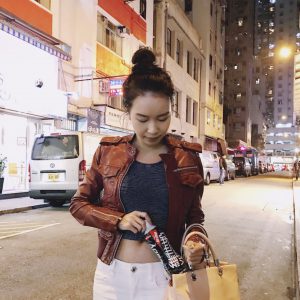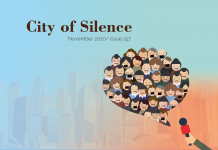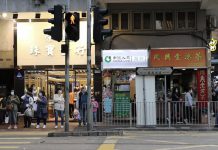Samantha Ting Oi-lam, a senior marketing executive of Topshop Topman, defines influencers as those who are neither celebrities nor socialites but who can create media value, that is garner publicity and promotional value other than through traditional advertising. Topshop Topman recruits influencers for its marketing campaigns on a seasonal or occasional basis through wardrobe sponsorships and collaborations.
Not only are companies moving away from just using celebrities to working with influencers, they are also going further and collaborating with micro-influencers. This term is given to those with a smaller circle of influence, perhaps limited to their own social network.
Last year, Topshop Topman held its first micro-influencer marketingcampaign in Hong Kong to promote a student discount. They selected young people, mainly undergraduates, whose Instagram style matched that of the brand. These micro-influences were invited to choose outfits from the store and post their photos on Instagram with hashtags such as #studentdiscount and #topshophk.
Ting explains micro-influencers can reach a more targeted audience for the brand and increase sales more effectively. Companies use influencers and micro-influencers to serve different purposes. Influencers raise brand awareness while micro-influencers drive sales.
With the rise of micro-influencers in marketing campaigns, agencies have sprung up to connect brands with micro-influencers. Winnie Lee Wing-yan founded Spread-it last year to meet the growing demand. So far, she has worked with over 40 different brands, mostly in beauty, fashion and food and beverages.

Instagram users who get an average of more than 50 likes on their posts are eligible to sign up as micro-influencers on the Spread-it website. They will be invited to join campaigns, based on their own preferences, via WhatsApp. Lee says most recruits are university students with around 1,000 followers or even less. The amount they get for each job varies, from HK$20 up to HK$2,000.
Kendy Tse Hoi-ting was one of the first to sign up. The 21-year-old loves taking and sharing pictures on social media. She views being a micro-influencer as a hobby rather than a part-time job.
The same could be said for 22-year-old Cherrie Leung Cheuk-man. “The income is too unstable,” says Leung, who has a full-time job. She has more than 10,000 Instagram followers and got her first “job” two years ago when she was offered a free meal after constantly posting about food on Instagram. She says she usually gets free food but is not paid for her food postings. The most she has received for a job was HK$700 for taking part in a fashion campaign.
Edwin Wong Kong-yuen, the founder of marketing technology company Advwhere, launched an influencer discovery platform, Cloudbreakr.com in 2015. Wong says the company defines an influencer as anyone who owns an open social media page with more than 5,000 followers. He explains the commercial value of an influencer is their strong attachment to the target audience. For example, a beauty blogger’s target audience is made up of precisely the people who would be likely to buy beauty products.
Leo Siu Chun-hei, the marketing director of Advwhere, says the important factor for both influencers and micro-influencers is not the number of followers they have but the accuracy of the match between the brand and the influencers’ target audience. He predicts there will be a trend of more brands collaborating with micro-influencers, and of influencers progressing beyond taking part in promotional campaigns to starting their own brands.
“You may see some influencers start their own product line or become a thought leader,” he says.










































